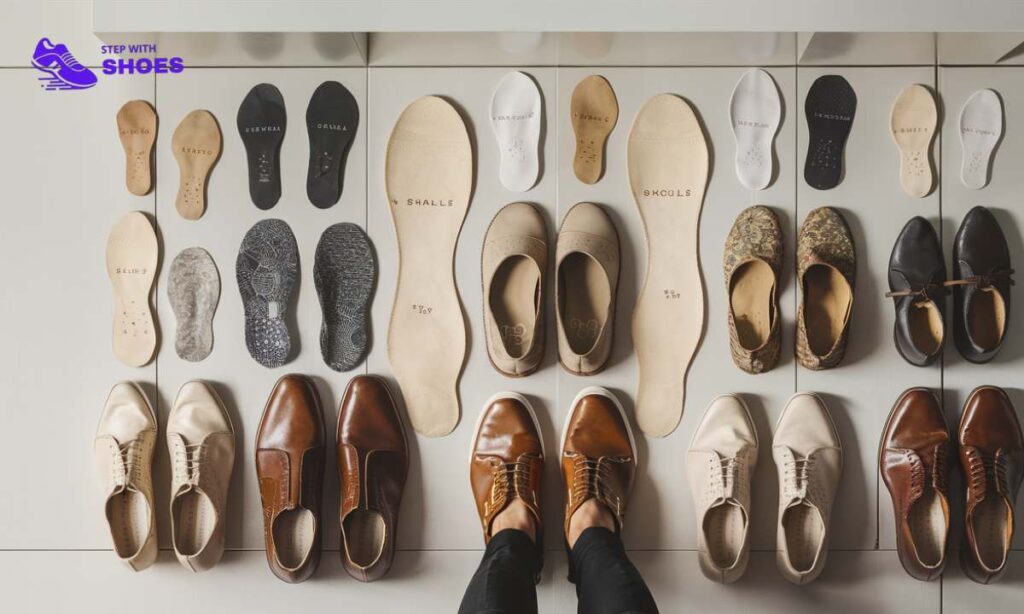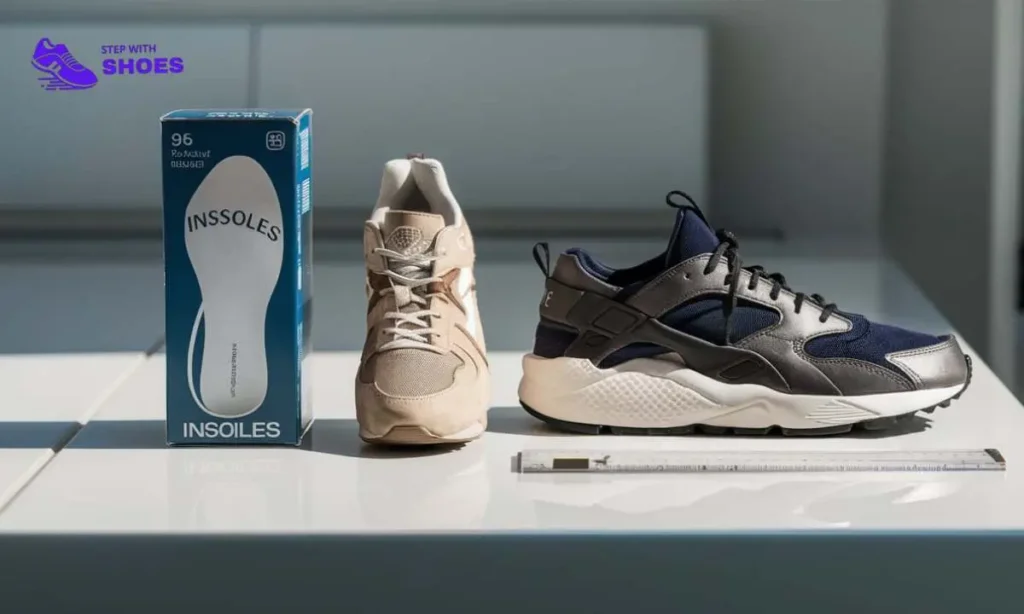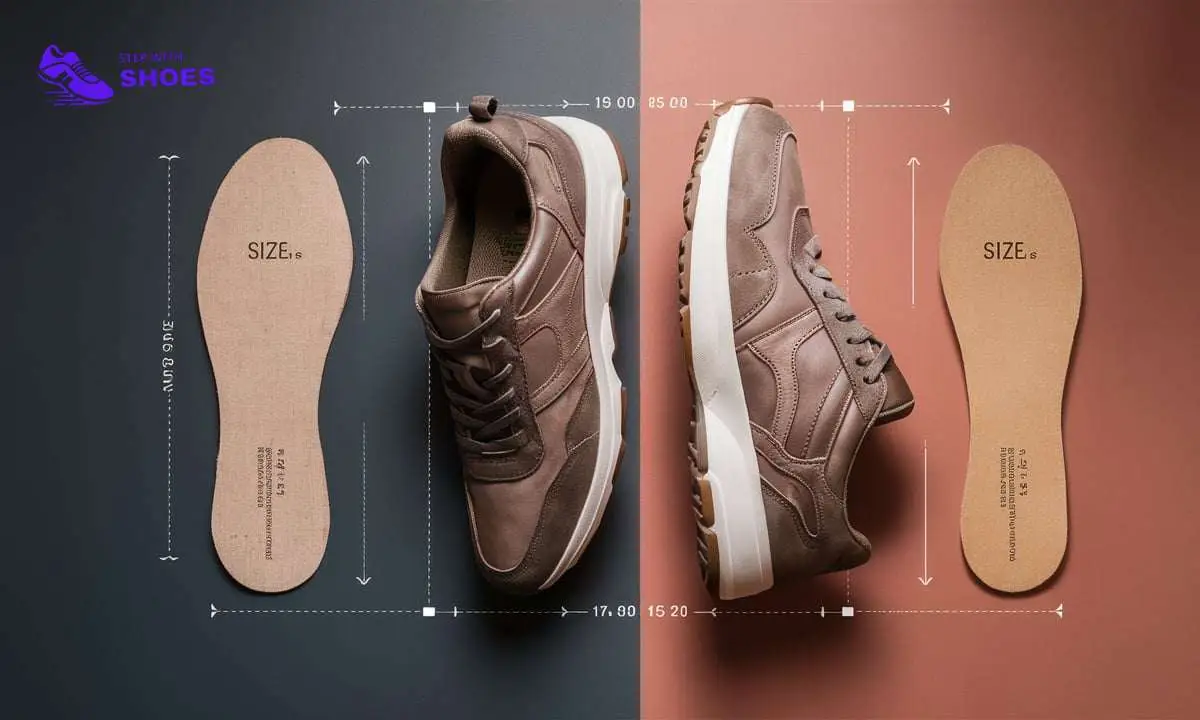Insole size usually matches shoe size, but slight variations can occur. Always check both for the best fit.
Understanding the relationship between insole size and shoe size is essential for comfort. Insoles provide support and cushioning, enhancing the overall shoe experience. Often, insole size corresponds with shoe size, but differences in brand and style can lead to variations.
Accurate measurement of both your feet and insoles ensures you select the right size, preventing discomfort and potential foot issues. Custom insoles can offer a tailored fit, addressing specific needs like arch support or plantar fasciitis. Always try on shoes with the intended insoles to confirm a perfect match, as this can significantly impact your comfort and foot health.
The Importance Of Proper Insole Fit
Choosing the right insole size is crucial. It impacts both comfort and shoe performance. Many people don’t realize the importance of a proper insole fit. An incorrect fit can lead to discomfort and health issues. Let’s explore why insole size matters so much.
Comfort And Health Benefits
A well-fitted insole offers numerous comfort and health benefits. Here are some key points:
- Prevents foot pain and discomfort
- Reduces the risk of blisters and calluses
- Supports proper foot alignment
- Enhances overall foot health
Proper insoles cushion your feet. They absorb shock during walking or running. This reduces stress on your feet and joints. Insoles also help distribute pressure evenly. This prevents localized pain and discomfort.
Impact On Footwear Performance
Insoles play a vital role in footwear performance. Incorrect insole size can affect how your shoes fit and perform. Here are some impacts:
| Proper Insole Fit | Improper Insole Fit |
|---|---|
| Enhances shoe comfort | Causes discomfort |
| Improves shoe stability | Leads to instability |
| Extends shoe lifespan | Accelerates wear and tear |
A correct insole size ensures your shoes perform at their best. It also prolongs the life of your footwear. Poorly fitting insoles can cause shoes to wear out faster. They can also lead to uneven shoe wear.
Investing in the right insole size is essential. It improves both comfort and the longevity of your shoes.
Understanding Shoe Size
Choosing the right shoe size is crucial for comfort. An incorrect size can cause pain and discomfort. Understanding shoe size helps ensure a perfect fit. This section will guide you through measurement standards and common sizing systems.
Measurement Standards
Shoe sizes vary across countries. The most used standards are US, UK, and EU. Each uses different scales.
| Region | Standard |
|---|---|
| United States | US Sizes |
| United Kingdom | UK Sizes |
| Europe | EU Sizes |
US sizes differ from UK sizes by one size. EU sizes use a different numbering system entirely. Knowing these standards is key to finding your perfect fit.
Common Sizing Systems
The three main sizing systems are US, UK, and EU. Each has unique characteristics.
- US Sizes: Used in the United States. Men’s and women’s sizes differ by about 1.5.
- UK Sizes: Used in the United Kingdom. These sizes are one size smaller than US sizes.
- EU Sizes: Used in most of Europe. These sizes are measured in centimeters.
Here’s a quick comparison for a men’s size 10 in the US:
- US: 10
- UK: 9
- EU: 44
Understanding these systems can make shoe shopping easier. Always check the sizing chart before purchasing.
Determining Insole Size
Finding the right insole size ensures comfort and support for your feet. It’s not always the same as your shoe size. This guide will help you measure and compare properly.

Measuring Your Foot
First, you need to measure your foot. Follow these simple steps:
- Place a blank sheet of paper on a flat surface.
- Stand on the paper with your heel against a wall.
- Mark the end of your longest toe.
- Measure the distance from the wall to the mark.
Repeat for both feet as they might be different sizes.
Comparing With Shoe Size
Compare your foot measurement with the shoe size chart. Different brands might have slightly different sizes. Use a table for easy comparison.
| Shoe Size (US) | Foot Length (inches) | Insole Length (inches) |
|---|---|---|
| 6 | 9.25 | 9.5 |
| 7 | 9.625 | 9.875 |
| 8 | 9.9375 | 10.125 |
| 9 | 10.25 | 10.5 |
| 10 | 10.5625 | 10.875 |
| 11 | 10.9375 | 11.25 |
| 12 | 11.25 | 11.5 |
Make sure the insole length is slightly longer than your foot length. This will ensure a comfortable fit inside your shoes.
Custom Vs Standard Insoles
Custom insoles are made to fit your feet perfectly. Standard insoles come in fixed sizes. Custom insoles provide better support and comfort. They are ideal for people with foot issues. Standard insoles are more affordable but might not fit perfectly.
- Custom Insoles:
- Made to order
- Better support
- More expensive
- Standard Insoles:
- Fixed sizes
- Less support
- More affordable
Common Mistakes In Sizing
Choosing the right insole size can be confusing. Many people make mistakes that lead to discomfort. This guide will help you avoid common sizing errors.
Ignoring Foot Shape
Many people overlook their foot shape. This can lead to poor fit. Feet come in different shapes like wide, narrow, flat, and high-arched.
Ignoring foot shape can make insoles uncomfortable. Always consider your foot’s unique shape when choosing an insole.
| Foot Shape | Insole Type |
|---|---|
| Wide | Wide insole |
| Narrow | Narrow insole |
| Flat | Flat insole |
| High-arched | High-arched insole |
Assuming One-size-fits-all
Many believe one-size-fits-all insoles work for everyone. This is a common mistake. Feet vary greatly in size and shape.
Using a one-size-fits-all insole can cause pain and discomfort. Always measure your foot accurately.
- Measure your foot length and width.
- Compare measurements with the insole size chart.
- Select the insole that matches your foot size.
Choosing the right insole size is crucial. Avoid these common mistakes for a perfect fit.
How To Adjust Insoles
Finding the perfect insole size for your shoes can be tricky. Sometimes, the insole size doesn’t match your shoe size exactly. Adjusting insoles is crucial for comfort and support. Here’s how to do it effectively.

Trimming For Fit
Trimming insoles can help them fit better. First, remove the original insoles from your shoes. Place the new insole on top of the old one. Align the heels together. With a pen, trace around the old insole onto the new one.
Use sharp scissors to cut along the traced line. Trim a little at a time. Reinsert the new insole into your shoe. Check if it fits perfectly. If not, trim a bit more until it fits well.
Adding Additional Padding
Sometimes, insoles need extra padding for comfort. Adding additional padding can relieve pressure points. You can use cushioned inserts or gel pads.
Place the extra padding under the insole. Focus on areas where you feel discomfort. Ensure the padding stays in place. Try walking around to test the fit. Adjust the padding as needed.
Follow these simple steps to adjust your insoles. Enjoy a more comfortable walking experience.
Signs Of Incorrect Insole Fit
Wearing insoles that don’t fit well can lead to many problems.
These signs can help you understand if your insoles are the right size.
A proper fit is crucial for comfort and shoe durability.
Foot Pain And Discomfort
Incorrectly sized insoles can cause foot pain and discomfort.
You might feel pain in the arch or heel.
Blisters and calluses can also form.
These are clear signs that your insoles don’t fit well.
Wear And Tear On Shoes
Poorly fitting insoles can damage your shoes.
You may notice uneven wear on the soles.
The insoles might shift inside the shoe.
This leads to faster wear and tear.
Here is a simple table to help you understand the signs:
| Sign | Description |
|---|---|
| Foot Pain | Pain in arch, heel, or other areas. |
| Blisters | Formation of painful blisters and calluses. |
| Uneven Wear | Uneven wear on shoe soles. |
| Shifting Insoles | Insoles moving inside the shoe. |
Always check for these signs to ensure your insoles fit properly.
This will keep your feet comfortable and extend the life of your shoes.
Choosing The Right Insole
Selecting the correct insole size is crucial for comfort. An insole too large or small can cause discomfort. Proper insoles ensure a perfect fit and provide support.
Material And Cushioning
Material and cushioning play an essential role in insole selection. Insoles come in various materials like foam, gel, and leather. Each material has unique benefits:
- Foam insoles offer excellent cushioning.
- Gel insoles provide superior shock absorption.
- Leather insoles are durable and breathable.
Choosing the right material can enhance comfort and reduce foot fatigue.
Arch Support And Stability
Arch support is crucial for maintaining foot health. Insoles should match your arch type:
| Arch Type | Suitable Insole |
|---|---|
| High Arch | Insoles with high arch support |
| Flat Feet | Insoles with firm support and stability |
| Neutral Arch | Moderate arch support insoles |
Insoles with proper arch support can prevent overpronation and improve stability.
Frequently Asked Questions
Is Insole Size The Same As Shoe Size?
Insole size usually matches shoe size, but it can vary by brand. Always check measurements for the best fit.
Should I Get A Bigger Shoe Size For Insoles?
Choose shoes that fit well without insoles. Try insoles with your regular size first. If too tight, consider half size up.
How Much Do Insoles Reduce Shoe Size?
Insoles can reduce shoe size by up to half a size. They provide extra cushioning and support, making shoes fit snugger.
Conclusion
Choosing the right insole size is crucial for comfort and foot health. Always match insoles to your shoe size. Proper alignment prevents discomfort and enhances performance. Don’t overlook the importance of insoles; they can make a significant difference. Make sure to invest time in finding the perfect fit for your feet.



Leave a Reply